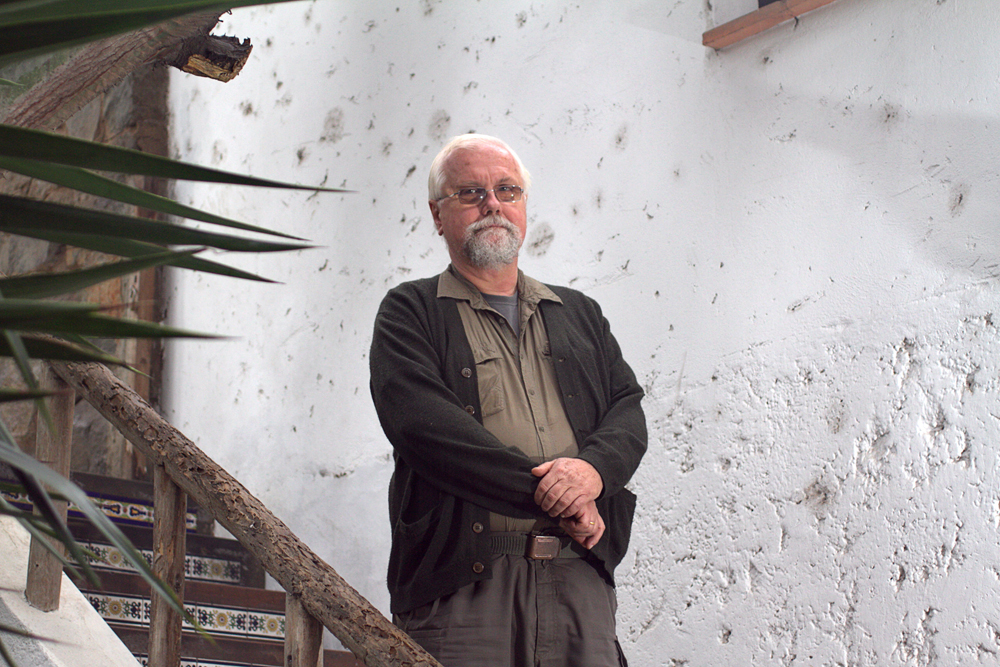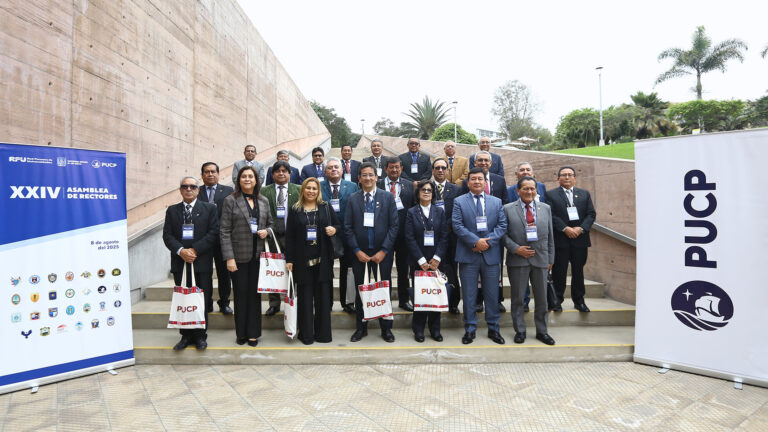Historical Archaeological Wari Discovery in Huarmey

It is about a 63-mummy funerary chamber and over one thousand archaeological pieces. PUCP professionals, together with Warsaw University specialists had been working in the area since 2002. We talked to Dr. Krystof Makowski, Ph.D., scientific advisor to the project.
“It is the first intact Wari tomb that deserves the imperial qualification. There is no way to compare it with anything found before,” firmly states Krzysztof Makowski, scientific advisor to the archaeological project which is responsible of the discovery.
Also a Professor and former Dean of the Liberal Arts and Humanities Faculty at PUCP, he told us about the patient work together with the research team from the Warsaw University, before discovering the important tomb. “We worked in the Culebras Valley, near the one of Huarmey, since 2002. But it is since 2010 that we moved to El Castillo de Huarmey, which was never systematically dug by any other project,” he says.
Makowki’s collaboration with Warsaw University comes from the numerous graduate seminars given by our Professor. In fact, Milosz Giersz, director to the archaeological project, had been his student, as well as the project coordinator Roberto Pimentel, alumni of this school.
It was believed that the area where the Huarmey Castle and discovered mausoleum belonged to the Moche culture, but a group headed by Giersz dispelled that hypothesis. “The pyramid showed liking evidence with Wari culture, since although it was made with adobe bricks in the northern style, the way it was built was quite different. The walls were attached to the cliff by some wooden framings (7-meter long). Besides, the steps were sone-covered, in the Andean style.
At the base of the pyramid, there was a palace with high walls, portals, platforms, ramps, squares, among other facilities. “We have just noticed we are before an important political center, formed by a palace at the base of a huge mausoleum, probably to worship the heads of the living linage, which used to be common in the Wari culture,” he adds.
The mausoleum
The dig carried out by Peruvian and Polish archaeologists and biological anthropologist was the result of hard and fine work. There have been explorations in the surroundings in order to know the context and analyze the findings as a whole.
In the chamber, the team found 63 funeral bundles of noble women, who had been placed in sequence and buried according to an Andean ritual. “It is the first time that so many people are buried in a monumental place, apart from other cemeteries of the same time period, which are on the plains. It is about a population which, in a conscious way, pulls from the rest,” explains Makowski. “This monument overlooks all the valley, which is located on a public space, the capital, where power was shown.”
Each mummy was a Wari of important linage. Each wore wooden earplugs carved and with fine work on precious metals. Three of them, the most important and possibly Wari queens, were located in small chambers, some sort of cublicles.
What made them different were the offerings kept in chests next to them. Each contained knitting objects, finely carved looms and earplugs with embedded semi-precious stones. Moreover, pots, ceramics, a kero (ceremonial cup) made of a stone similar to the one of Huamanga, sculpted and with embeddings, “caleros” (plates used when chewing coca) and diverse wooden artifacts, copper, gold and silver.
Future plans
Although it is true there is still material to precisely date the funerary chamber, the evidence of these objects place them between 750 and 850 A.D., according to Makowski. “The next step is definitely and intense analysis work. We are in touch with the best genetic specialists to analyze the genetic relationship among these women and others in the funerary chambers,” he states.
One piece of good news is that, thanks to the support of several institutions, these findings will be exhibited next year. “All the objects will be preserved the most appropriate way. Plans for a museum on site will be examined later,” he points out.
According to the researcher, this discovery will also provide us with clues about the politic role of women of the time, and how the organization was inside the Wari Empire. “They had another style of government, instead of imposing headquarters and administrative centers, they respected the local governments and made sure they plead alliance. What was discovered could be about a monument of the cult of hegemonic control.”
Leer en español. Histórico descubrimiento arqueológico Wari en Huarmey



Deja un comentario